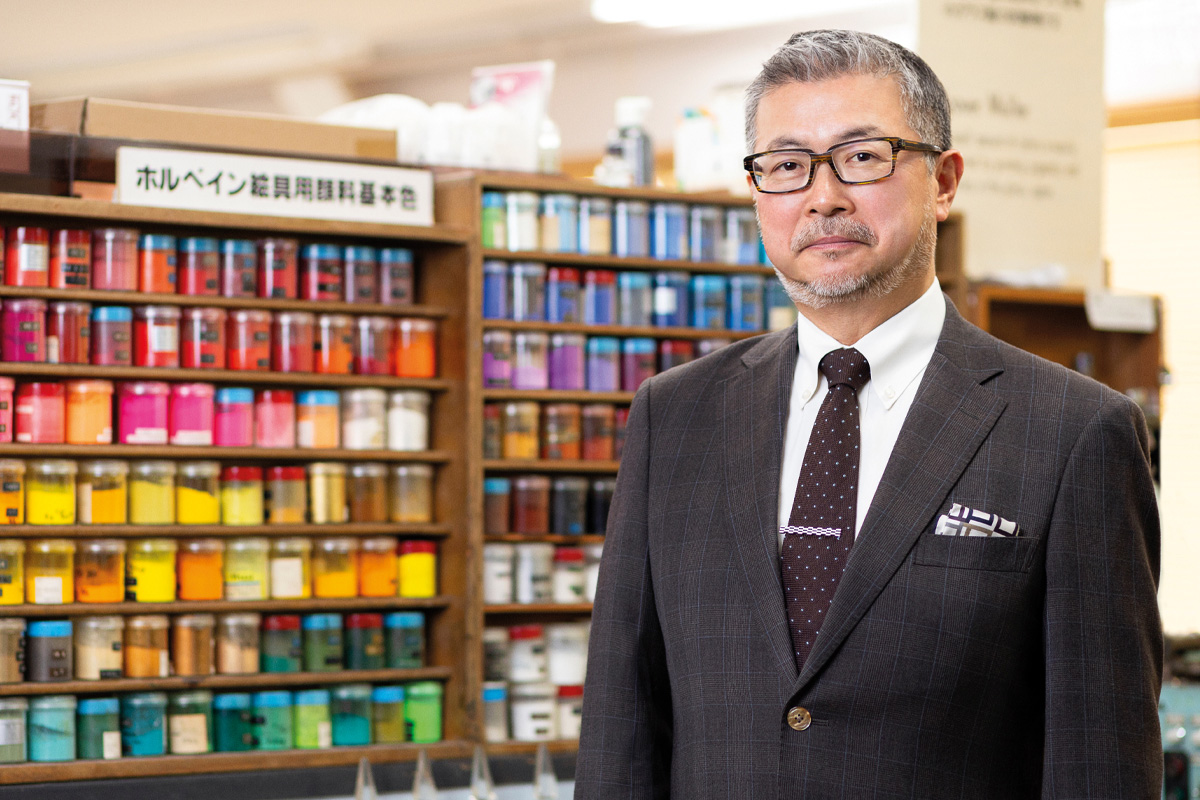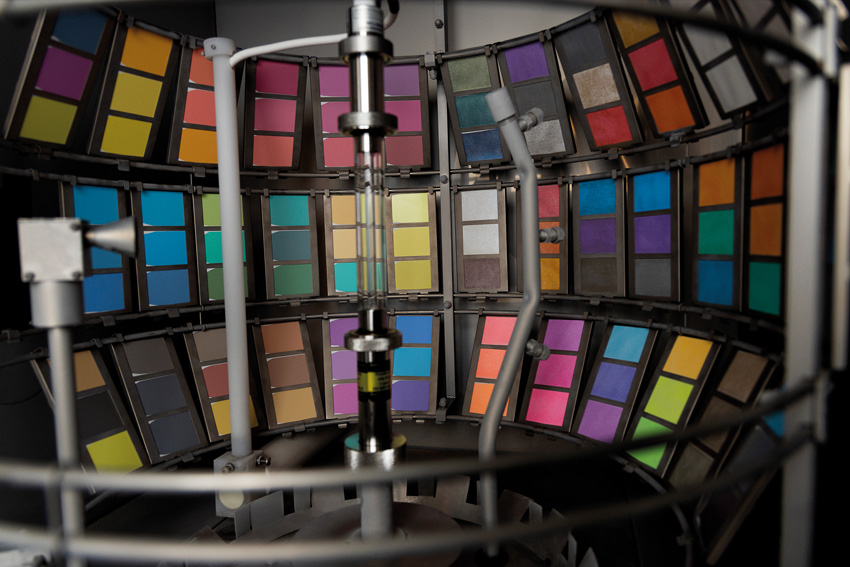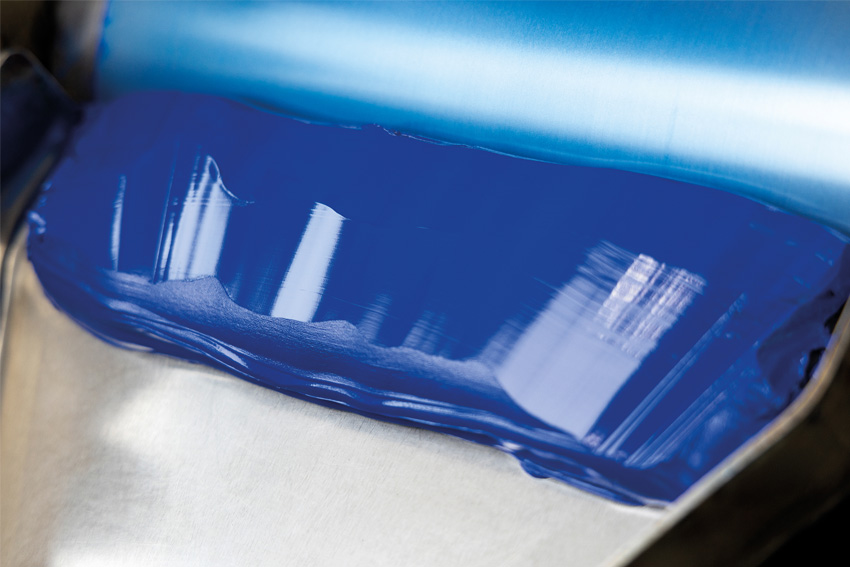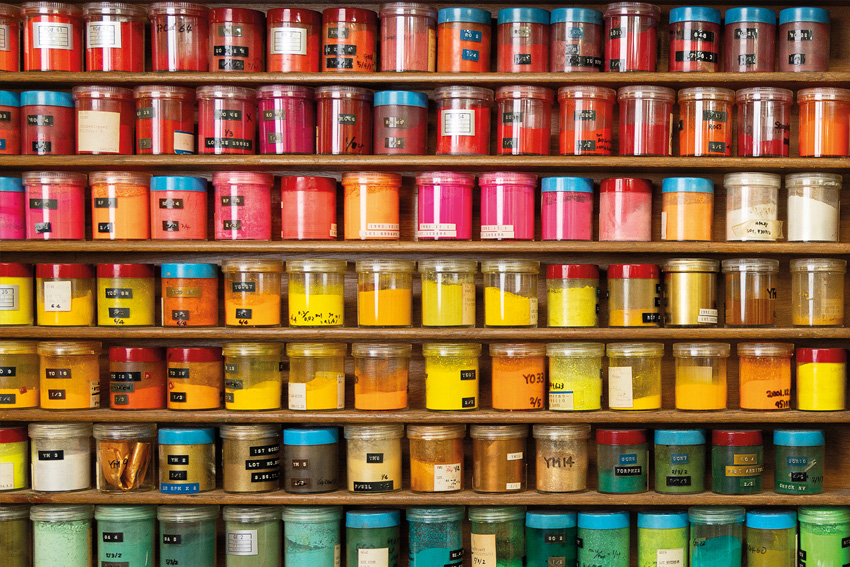Yoshio Kawami, President of Holbein Art Materials, shares insights into the company’s approach to international markets, product development, and the evolving landscape of artistry in a digital age.

In the last 25-30 years, Japan has witnessed the emergence of regional competitors who have emulated the Japanese model of success while benefiting from lower labor costs, thereby challenging Japan's position in certain markets. Nevertheless, some Japanese brands, like Muji, have maintained success overseas. What distinct advantages and added value do Japanese brands bring that contribute to their success in the global market?
It is true that in the past, products labeled as "made in Japan" sold exceptionally well solely because of their origin. However, in recent times, being made in Japan alone is not sufficient to guarantee strong sales. To gain international acclaim, our products must exhibit high quality or offer added value beyond their Japanese origin. While Japanese-made products, such as Toyota and Honda cars, have maintained their reputation, our company, Holbein, operates in a niche industry.
Our corporate name, Holbein, is derived from the name of a German artist. We were founded during a period when goods and products were scarce. Our founder and preceding generation undertook the mission of seeking out high-quality materials and products within Japan to create exceptional products for the Japanese people.
In 1970, the Japan Expo took place in Osaka. During that period, I was a child in school. Coincidentally, around the same time, the Apollo 11 mission journeyed to the moon and returned with a moon rock, which was subsequently displayed at the Japan Expo. I was deeply impressed by the technology of that era, particularly the advancements in Japanese technology.
In the past, access to information about overseas markets was limited, but in the modern age, with technology like smartphones and tablets, we have vast amounts of information at our fingertips. Therefore, simply relying on the "made-in-Japan" label is no longer enough to sell products. We must strive to offer something unique, innovative, and previously unseen in the market.
In 2019 before the pandemic, I had the opportunity to visit the Creativeworld exhibition in Frankfurt, Germany. While we did not have a booth there, we explored the booths of other companies, including American and European brands. We were planning to set up our booth for the next year's exhibition. During that time, we deliberated on how to effectively sell "made-in-Japan" products in overseas markets. We concluded that merely selling products and highlighting their Japanese origin is not sufficient. Instead, we need to emphasize what sets us apart from our competitors.
Although we have a history of around 120 years, European competitors have been in the industry longer. Given this, we recognize that we cannot compete based solely on experience and longevity. What distinguishes us should be our technology. Therefore, we are concentrating on setting ourselves apart from others and are preparing to participate in the Creativeworld Exhibition in the near future.

Lightfastness testing
You employ different technologies in your product development, one of which is your dispersion technology. Typically, pigments are distributed as aggregated particles, but they can exhibit various characteristics, from spherical to acicular or amorphous, with sizes ranging from tens of nanometers to several micrometers. It is challenging for these micro pigments to express their coloring power in such a state. Could you provide more details about the specialized technology you have developed for high-viscosity fluids, and how it is particularly effective in this context?
Our technology team is responsible for developing this innovative technology, and the staff in that department typically have backgrounds in the field of chemistry. You can find detailed information about this dispersion technology on our website. We have the capability to make color adjustments for approximately 400 different colors, and we are not limited to just the three primary colors; we can work with a wide range of pigments to create custom colors. The research and development department operate out of a lab located in Hiraoka, Osaka, where this groundbreaking technology was initially developed.
Paint comes in a variety of colors, depending on its intended use: for professional paint, lightfastness is important to preserve the brilliance of the work for posterity, but sometimes transparency, opacity, and vibrancy are also prioritized. Holbein has more than 400 pigments from all fields, including natural Italian earth, inorganic pigments such as cobalt blue, high-grade organic pigments such as DPP, fluorescent pigments, and pearl pigments, to meet a variety of needs and at the same time, constantly search for pigments.
Pigments are an agglomerated form (secondary particles) of the original pigment particles (primary particles). The size and shape of these particles vary from pigment to pigment and can be spherical, needle-like, or amorphous. In order to obtain the pigment's original color, the agglomerated particles must be converted back into the pigment's original particles (primary particles), a process known as dispersion. Dispersion is where we, as paint manufacturers, show our skills. As mentioned above, the properties of pigments vary from one pigment to the next, and each color requires a different approach when it comes to designing paints. Based on our accumulated experience, we are actively working on new approaches using new raw materials on a daily basis to further refine our technology. Holbein Vernét oil colors were born from there. The formulas are the result of the fusion of traditional and modern materials, which are excellent regardless of the production machine, but are also combined with the best production machines to bring out the best performance. Holbein Vernét oil colors are the result of the fusion of a superior formula and a superior production machine, which brings out the natural color and transparency of the pigments to the limit and ensures a smooth brushstroke.
Your company recently introduced the SQ-T Cat’s Tongue watercolor brush in September, designed to make use of the traditional shape, with excellent water absorption properties that enable detailed expressions. Could you elaborate on the reasons behind creating the SQ-T Cat’s Tongue brush and explain how it offers advantages over conventional brushes available in the market?
The development of this brush was a collaborative effort with our partner company. We actively listened to the feedback and demands of artists, aiming to enhance the traditional brush and make it a tool that better facilitates artistic expression. This brush's creation is just one aspect of our ongoing journey to respond to artists' needs.
Currently, we face two significant challenges related to these brushes. Traditionally, these brushes have been crafted from animal hair, but the constraints of animal conservation have made it increasingly difficult to source such materials. For example, the use of mongoose hair, which was once prevalent, is no longer viable. I believe that, in the future, we may see a shift towards using nylon brushes as a replacement. From a technological standpoint, replicating the properties of animal hair with synthetic fibers is relatively straightforward. However, the challenge lies in motivating vendors and manufacturers of brushes to adopt synthetic fibers as the primary material.
Synthetic fiber materials are commonly employed for items like fishing lines. Still, in the context of painting, we need to add cuticles to the synthetic fiber so that it can effectively absorb water. The issue is that synthetic fiber lines are predominantly mass-produced for products like toothbrushes, making it challenging to find a suitable manufacturer for paintbrushes.

Three roll mill (Vernét oil color)
Are you actively seeking partnerships with overseas companies to collaborate on the development of new products?
Our color materials are produced and developed in-house. However, when it comes to creating supplies for other painting materials, we frequently collaborate with partners and market these products. For instance, we have worked with an international company that specializes in producing paper for water painting. We have also engaged in partnerships with domestic manufacturers for various supplies. We do not handle the development of these supplies internally but instead seek collaborative opportunities.
On the other hand, when it comes to developing other painting color materials like acrylic paint, watercolor, and oil colors, we handle these processes in-house. Regarding the overseas market, we have formed a joint-venture with a company in South Korea and are currently exploring opportunities to establish a partnership in China through this company. Our U.S. distributor, HK Holbein, is actively seeking a partner company for manufacturing. In the manufacturing process, cost considerations are significant, which is why, in most cases, we seek partners in Asia rather than other regions. As for paintbrushes, we have partners exclusively in the domestic market.
The arts and crafts sector are experiencing disruption with the rise of digital art, thanks to software like Photoshop and AI generators such as Midjourney. Many artists and illustrators have transitioned to digital methods, citing efficiency and versatility. How does this shift toward digital art impact your business as a supplier of traditional art materials?
Indeed, digital tools have been on the rise in the art field, with many artists incorporating them into their work. We have also observed the introduction of AI tools like ChatGPT and others. Given this evolving landscape, we are considering ways to expand our business. AI offers remarkable versatility. For instance, it can streamline the entire accounting process, potentially reducing the need for three personnel down to just one in that department.
AI has its strengths, but it cannot replicate the creative process of color creation. AI excels at data management, but the act of producing colors relies on human perception and sensitivity, which is fundamentally distinct from what AI can accomplish. Our specialization lies in providing artists with high-quality art materials and colors to aid them in their creative expression. Our mission is to empower artists to convey their unique visions effectively.
Some artists might aim to represent what appears to be red using the color blue, driven by their artistic sensibilities. To support these artists, we must offer the finest quality blue color and painting tools. This is a task that cannot be undertaken by AI. While it is beneficial for certain artists to utilize computers for drawing, it is essential to recognize that when their work is printed, it transcends the digital realm and becomes analog, involving ink dots rather than pigments, which are distinct from the digital medium.

Standard pigments
Looking at international expansion, have you identified other countries or regions that are pivotal to your company's growth?
We are confronted with various challenges driven by demographic shifts, including an aging population and declining birth rates. Despite these challenges, we have observed that some elderly individuals find solace in pursuing hobbies involving painting materials. On the other hand, there is a concerning trend among students, with fewer opportunities for drawing or painting due to teachers' concerns about maintaining cleanliness in the classrooms. This decline in art education is disheartening because we believe that art is an integral part of a well-rounded education.
To address this, we have taken proactive measures. We dispatch our staff to art universities, where they offer lectures on painting techniques, proper brush and paper utilization, and the benefits of using quality tools. We are committed to expanding these educational opportunities.
On the domestic front, we are leveraging social media to foster and enhance art culture. Our aspiration is to extend our efforts to international markets. In the United States, we are collaborating with retail chains to distribute our products, recognizing the vast difference in market size compared to Japan. As part of this initiative, we are modifying our product packaging to align with the specific requirements of each market. Online sales play a substantial role in China, and we are establishing partnerships to expand our online presence. The variation in market size is the most significant distinction between Japan and other markets, such as the US and China, which is why we are pursuing partnerships with large retail chains in the US to effectively distribute our products. This marketing endeavor is currently in progress.
Envisioning your 130th anniversary, seven years from now, what is your vision for the company during that timeframe?
We recognize that remaining stagnant is not an option, and we must look to the younger generation to lead the development and improvement of our company. To achieve this, it is essential for the younger generation to cultivate high levels of creativity, expand their knowledge, and adapt to changes in order to enhance their creative abilities. We encourage them to take proactive steps and approach their work with curiosity.
Additionally, we aspire to become a leading international manufacturer of art supplies and present our products at exhibitions like Paperworld. Our goal is for these products to receive high acclaim from exhibition visitors and potential customers. To achieve this, we will continue our efforts in research and development.
Looking ahead, we view the next seven years as a significant milestone in our ongoing journey of development, one that paves the way for our endeavors far into the future.
0 COMMENTS